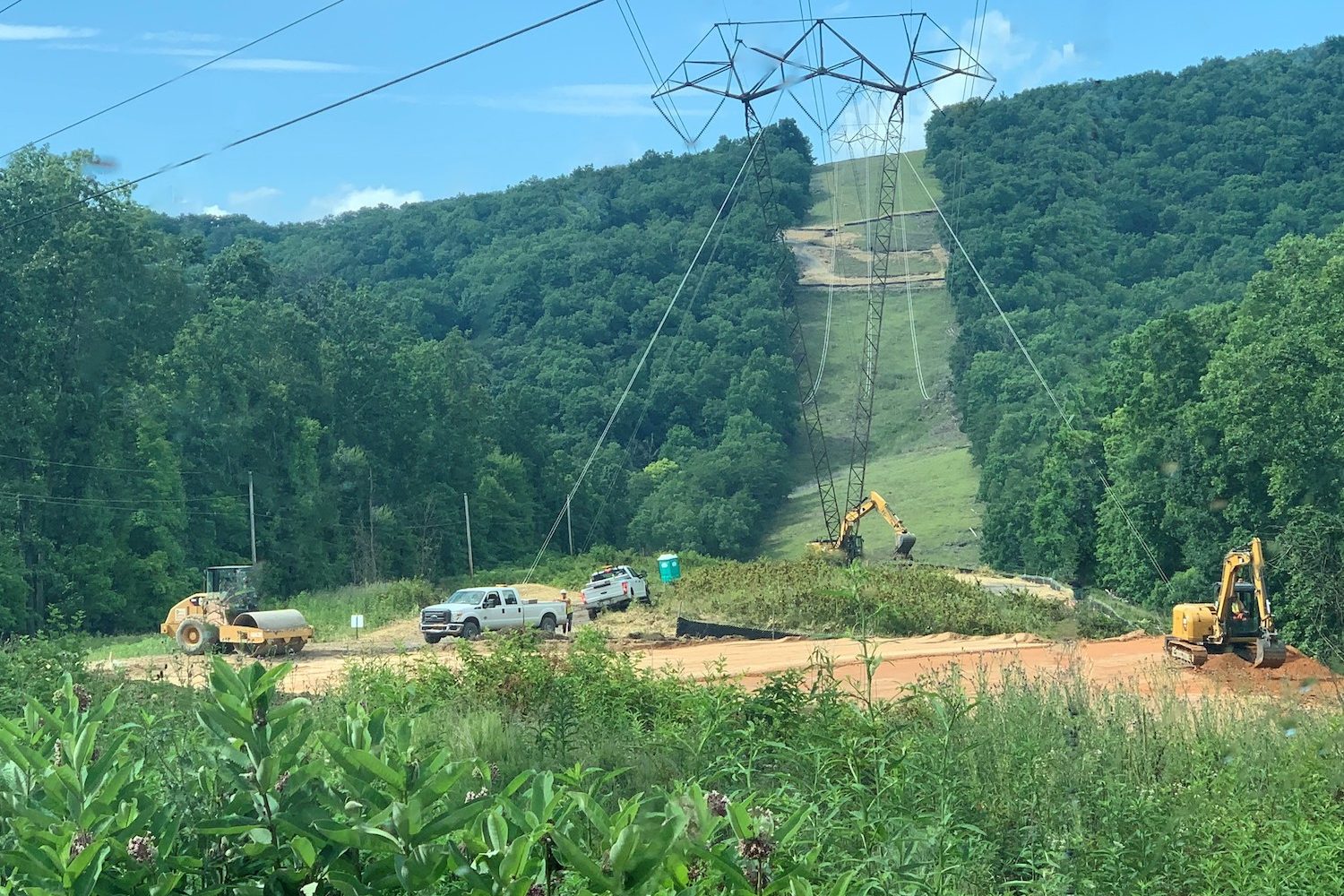Dominion TL 550 Powerline

Project Details
When this project began A.L.L. Construction personnel worked closely alongside Dominion Energy’s Road Coordinator and Environmental Compliance Coordinator, which insured the safety of employees and the environment. From the start of the project there were several challenges, including: steep terrain, large boulders, and remote working conditions.
Throughout the duration of the project E&S controls (silt fence, silt sock, jute matting, etc.) rock excavation, and earth removal were daily processes. Once the excess earth and rock material was removed, we then placed 3” aggregate stone for the roads and performed rolling & compaction to those areas. Several roadways on the project had soft areas requiring over-excavation. In these situations, we would substitute the unsuitable material for larger 6” to 9” aggregate stone. Drainage ditches were also installed to divert and direct water away from the roadways. Anywhere on the site that a stream crossing occurred we would construct a crane mat bridge to eliminate environmental impact to the stream and allow for safe crossing on foot, in a vehicle, or machine.
Once roadways were completed, our next step consisted of installing drill pads for each tower’s foundation. A.L.L. Construction assisted the drilling contactor by removing dirt from the foundation area in order to achieve a level drilling surface.
Next, crane pads were put in place by means of cutting and filling large amounts of earth in 1’ lifts and compacting the material to make a solid area for cranes to operate. The crane pads were leveled using a laser level to ensure that the work surface had minimal variation. A.L.L. Construction also built numerous 100’ x 200’ pull pads and fiber pads throughout the project.
Once all the overhead powerline work was completed, we began the rehabilitation process of each structure as needed. Rehabbing featured the removal of all pads and crane mat bridges along with permeant seeding & mulching (performed using a Hydro-seeder or mulching machine). Stream restoration procedures were also completed during this time.
Once grass began growing and thriving along the seed & mulched areas, the Environmental Coordinator would allow us to remove any remaining E&S controls.
This project is still ongoing.